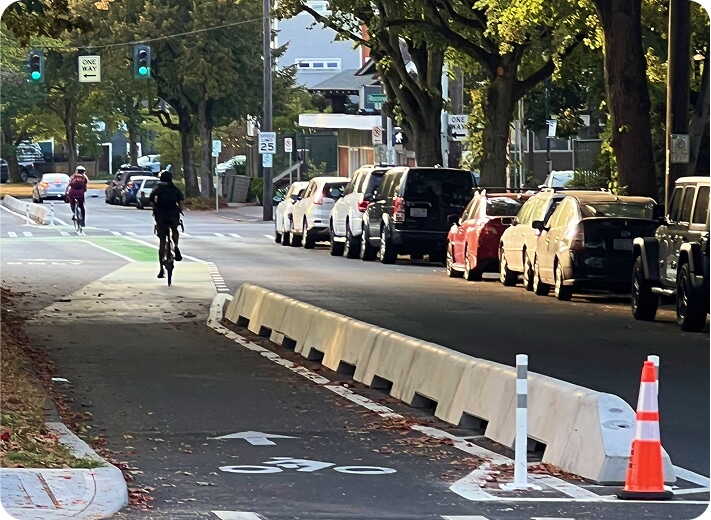As a daily bike commuter or weekend cyclist, you know the white-knuckle feeling of riding next to speeding traffic with only a painted line or bent flex post for “protection.” But what if your daily ride could actually feel safe? Cities installing Safe-T Lanes crash-tested barriers are transforming the cycling experience in ways that go far beyond basic safety. Here are the top 10 benefits cyclists are raving about on busy corridors protected by concrete barriers.
1. You Can Finally Relax and Enjoy Your Ride
Remember learning to ride a bike as a kid—the pure joy of movement, the wind in your face? That feeling returns when you’re protected by 4,400 pounds of concrete between you and traffic. Cyclists report their heart rates actually decrease in protected sections because they’re not constantly on high alert for encroaching vehicles. You can finally focus on your ride, not survival.
“I used to arrive at work already stressed from my commute. Now I actually look forward to my morning ride. It’s become my meditation time.”
Maria, Denver commuter
2. Drivers Can’t “Just Squeeze By” Anymore
We’ve all been there—a driver thinks they can pass you with “plenty” of room, missing your handlebars by inches. With Safe-T Lanes’ physical separation, those terrifying close passes are physically impossible. The concrete barrier forces drivers to stay in their lane, period. No more holding your breath as oversized trucks rumble past.
3. Door Zone? What Door Zone
One of the biggest fears for urban cyclists is getting “doored”—having a parked car’s door suddenly open into your path. Safe-T Lanes create enough separation that you’re completely out of the door zone. You can ride at a comfortable pace without constantly scanning for occupied parked cars or swerving into traffic to avoid potential doors.
4. Your Kids Can Actually Ride to School
Parents who’ve been saying “when you’re older” to kids wanting to bike to school are changing their tune. The physical protection of concrete barriers means children as young as 8 or 9 can safely navigate bike lanes that were previously too dangerous. Family bike rides are moving from quiet neighborhood loops to actual transportation.

